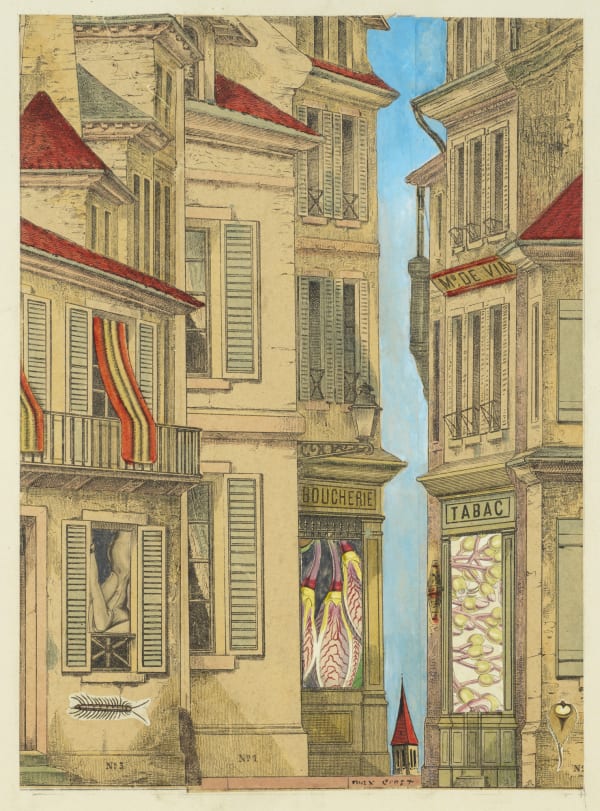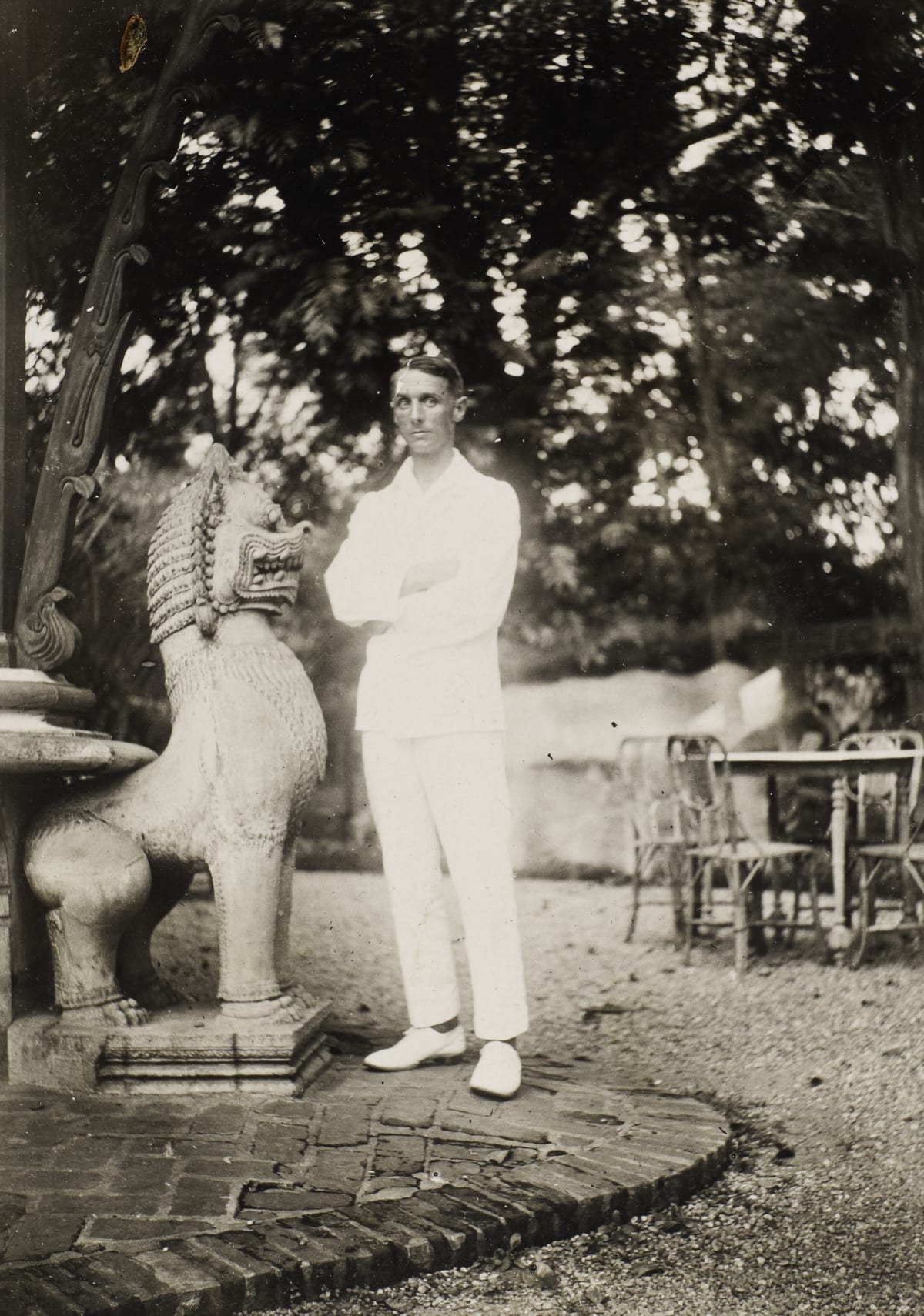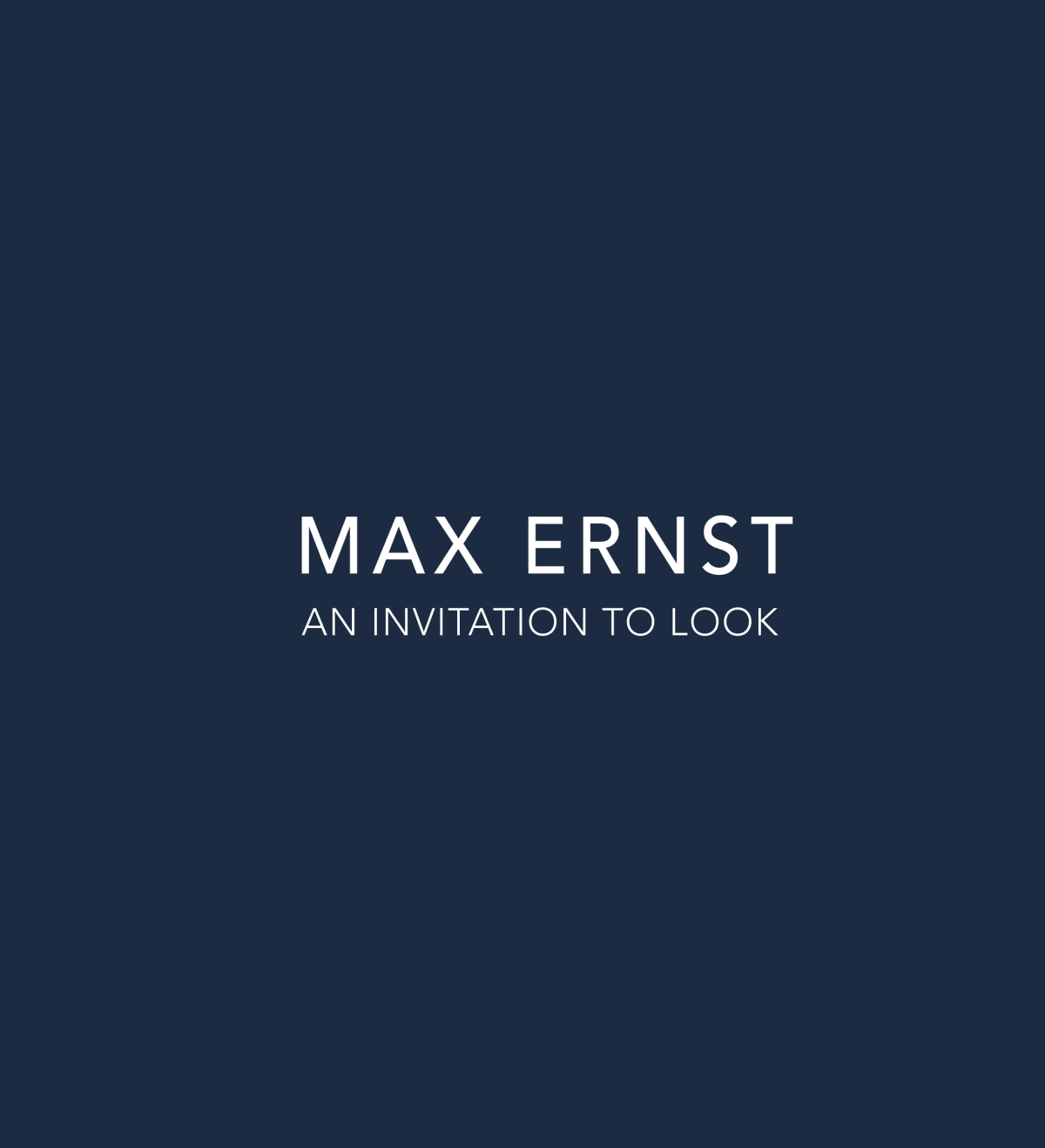Max Ernst German, 1891-1976
-
 L'arbre, 1925
L'arbre, 1925 -
 Ci-fut une hirondelle, 1927
Ci-fut une hirondelle, 1927 -
 ... de ma main, mon père, j’ai dressé un petit autel de travail ..., 1929-30
... de ma main, mon père, j’ai dressé un petit autel de travail ..., 1929-30 -
 Le R.P. Dulac Dessalé, 1929-30
Le R.P. Dulac Dessalé, 1929-30 -
 La horde des barbares, 1934
La horde des barbares, 1934 -
 Dancers under the starry sky, 1951
Dancers under the starry sky, 1951 -
 Oiseaux dans la forêt , 1951 ca.
Oiseaux dans la forêt , 1951 ca. -
 Pèse Esprit , 1963
Pèse Esprit , 1963 -
 Eine Heringsschule , 1965
Eine Heringsschule , 1965 -
 Floral, 1968
Floral, 1968 -
 Julia Baisers, 1968
Julia Baisers, 1968 -
 Le sexe d’un ange, 1968
Le sexe d’un ange, 1968 -
 La vie quotidienne , 1970-71
La vie quotidienne , 1970-71 -
 Ou donner la Bobine, 1970-71
Ou donner la Bobine, 1970-71
Max Ernst was born on April 2, 1891, in Brühl, Germany. He enrolled in the University at Bonn in 1909 to study philosophy, but soon abandoned this pursuit to concentrate on art. At this time he was interested in psychology and the art of the mentally ill. In 1911 Ernst became a friend of August Macke and joined the Rheinische Expressionisten group in Bonn. Ernst showed for the first time in 1912 at the Galerie Feldman in Cologne. At the Sonderbund exhibition of that year in Cologne he saw the work of Paul Cézanne, Edvard Munch, Pablo Picasso, and Vincent van Gogh. In 1913 he met Guillaume Apollinaire and Robert Delaunay, and traveled to Paris. Ernst participated that same year in the Erste deutsche Herbstsalon. In 1914 he met Jean Arp, who was to become a lifelong friend.
Despite military service throughout World War I, Ernst was able to continue painting and to exhibit in Berlin at Der Sturm in 1916. He returned to Cologne in 1918. The next year he produced his first collages and founded the short-lived Cologne Dada movement with Johannes Theodor Baargeld; they were joined by Arp and others. In 1921 Ernst exhibited for the first time in Paris, at the Galerie au Sans Pareil. He was involved in Surrealist activities in the early 1920s with Paul Eluard and André Breton. In 1925 Ernst executed his first frottages; a series of frottages was published in his book Histoire naturelle in 1926. He collaborated with Joan Miró on designs for Sergei Diaghilev that same year. The first of his collage-novels, La Femme 100 têtes, was published in 1929. The following year the artist collaborated with Salvador Dalí and Luis Buñuel on the film L'Age d'or.
His first American show was held at the Julien Levy Gallery, New York, in 1932. In 1936 Ernst was represented in Fantastic Art, Dada, Surrealism at the Museum of Modern Art in New York. In 1939 he was interned in France as an enemy alien. Two years later Ernst fled to the United States with Peggy Guggenheim, whom he married early in 1942. After their divorce he married Dorothea Tanning and in 1953 resettled in France. Ernst received the Grand Prize for painting at the Venice Biennale in 1954, and in 1975 the Solomon R. Guggenheim Museum gave him a major retrospective, which traveled in modified form to the Musée National d'Art Moderne, Paris, in 1975. He died on April 1, 1976, in Paris.
-

MIART 2021
17 - 19 Settembre 2021ML Fine Art is pleased to announce its participation to the 25th edition of Miart, Milan’s international modern and contemporary art fair, that will take...Maggiori informazioni -
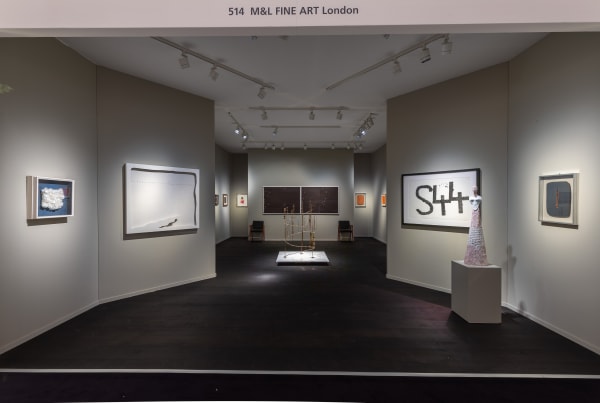
TEFAF Maastricht 2020
4 - 11 Marzo 2020We are pleased to announce our participation at TEFAF Maastricht 2020. Our booth will showcase a selection of historically relevant paintings, sculptures and works on...Maggiori informazioni -
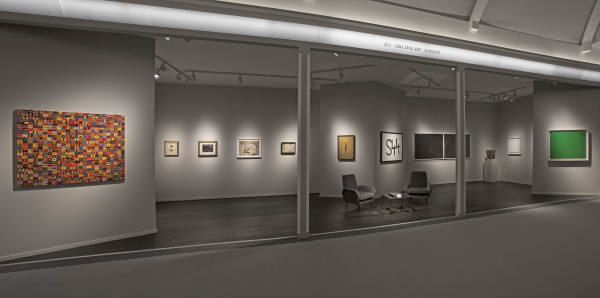
Masterpiece London 2019
27 Giugno - 3 Luglio 2019M&l Fine Art is pleased to participate, for the fourth consecutive year, at Masterpiece London. Our booth featured a selection of historic works by Modern...Maggiori informazioni














